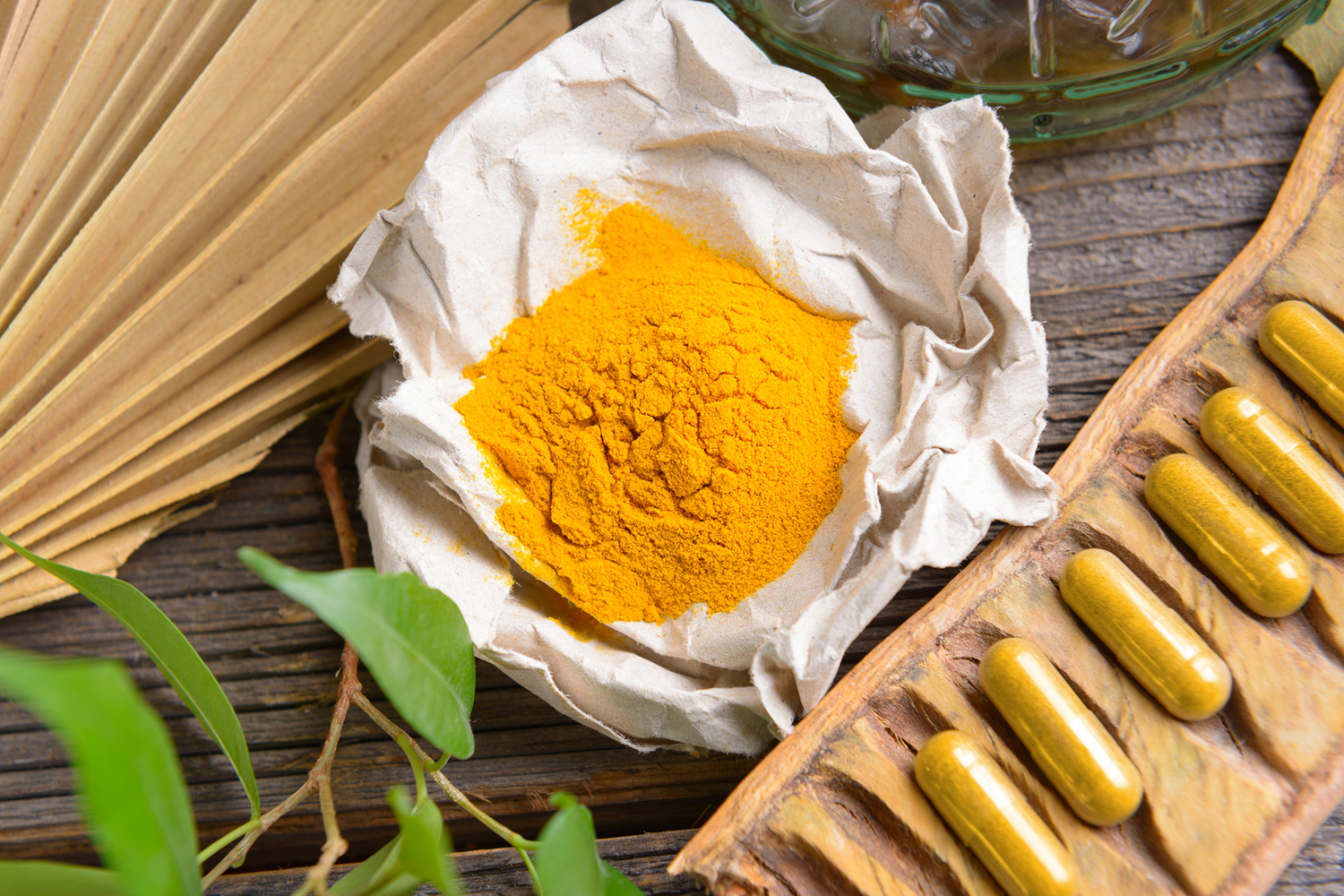Natural Pain Relief

ID 39556745 © Amaviael | Dreamstime.com
Pain is defined as a noxious stimulus, and noxious indeed it is.
While most of us do not like pain, it does serve a purpose.
What is Pain?
Pain is an incredibly unpleasant experience designed by our body to warn us of injury or illness.
- Break your leg? Pain will most certainly tell you not to walk on it.
- Tooth abscess? Pain will most certainly tell you to pull the tooth—anything to make the pain go away.
However, pain is an important signal to let you know something has gone wrong and needs attention, which can be life-saving. So much as we may hate it, it is a necessary part of our health and longevity.
It is important to understand what the body is asking for so that the best steps can be taken to address the problem and (hopefully) the pain as well.
Chronic Pain
Chronic pain does not resolve easily.
It diminishes mood and energy, and drastically alters quality of life.
A few of the causes of chronic pain are:
- damage to the spinal vertebrae
- trigeminal neuralgia
- rheumatoid arthritis
- fibromyalgia
Methods of Pain Relief
Now that pain has our attention, we can deal with the underlying cause.
But what do we do in the meantime, until the injury is healed or the illness cured?
-
Historical Treatments
Humans have sought effective pain relief since prehistory.
Various medicines and methodologies have gone in and out of vogue, some based on early science and some mystic in nature.
-
Physical Methods
One of the ones I find most interesting (if gruesome!) is trepanning, in which practitioners more than 1,000 years ago drilled holes in the skull to release the demons responsible for headaches, epilepsy, and mental illness.
Stings from electric fish were used in ancient Egypt to cure painful joints and headaches.
-
Herbal Remedies
Plants have always been a part of the medicines developed to relieve pain.
Cocaine from coca leaves is a very effective topical pain reliever, and opium from poppies yields morphine.
However, though these botanicals numb the pain, they do not address the underlying cause of the pain, which most often is inflammation.
-
-
Pharmaceutical Risks
The reason people keep buying them is because they reduce pain, but at what cost?
-
Over-The-Counter Drugs
You might be shocked to learn that:
- more than 16,500 people a year die from the complications of using ibuprofen
- the number one cause of acute liver failure in the United States is acetaminophen.
Be Careful with NSAIDs
NSAIDS are "nonsteroidal anti-inflammatory drugs."
Some drugs in this class are:
- aspirin
- naproxen sodium
- celecoxib
- ibuprofen
The problems with these drugs is their side effects, which include:
- stomach ulcers
- intestinal ulcers
- gastrointestinal bleeding
- reduced kidney function
- high blood pressure
- increased risk of:
- heart attack
- stroke
-
Prescription Drugs
The opiate epidemic of narcotic pain relievers is incredibly damaging and shows little sign of abating.
How many lives are damaged and lost because of opioid addiction?
As if these consequences weren’t enough, there is also another glaring problem: these drugs do nothing to treat the underlying cause of the pain.
They do not heal, or treat, or cure.
-
Natural Remedies for Pain
Fortunately, there are powerful natural compounds that can make a measurable difference, and two of the best are curcumin and boswellia.
-
Curcumin for Pain and Inflammation
Curcumin is a concentrated extract of the spice turmeric. For relieving most types of pain, addressing inflammation is key, and curcumin may be the most effective natural anti-inflammatory in the world.
Rather than mask the pain signal, or drive down inflammation artificially, curcumin actually modulates inflammation, and reduces pain with relatively little risk. It also does what these drugs cannot do: it boosts the healing of the underlying cause of pain.
Turmeric contains only 2 to 5% curcumin, so in order to be effective, it needs to be extracted and concentrated. Curcumin has been found effective in published human studies, called clinical studies, on arthritis, autoimmune diseases, skin conditions, cancer, diabetes, and depression.
In several of these studies, curcumin is able to equal or even outperform a class of drugs commonly used called nonsteroidal anti-inflammatory drugs (NSAIDs). Some drugs in this class are aspirin, naproxen sodium, celecoxib, and ibuprofen. The problems with these drugs is their side effects, which include stomach or intestinal ulcers, gastrointestinal bleeding, reduced kidney function, high blood pressure, and a significantly increased risk of heart attack and stroke.
Curcumin has been shown to effectively relieve pain by modulating every single type of inflammatory pathway in the body. I consider it the most valuable player (MVP) on the pain-relieving team.
Fortunately, curcumin has side benefits instead of serious side effects. Some side benefits of curcumin (to name only a few) are helping to prevent heart disease and diabetes. Since curcumin doesn’t absorb very well, enhancing absorption, turmeric essential oils can make a real difference in your degree of pain relief. It has also been found that turmeric essential oil itself has some great anti-inflammatory activity.
Advanced Absorbtion
Unfortunately, curcumin is hard to absorb. There is a patented, clinically studied enhanced absorption curcumin that uses turmeric essential oil, rich in ar-turmerone. It has been shown to reduce both pain and inflammation in both osteoarthritis and rheumatoid arthritis, performing as well as drugs. There are also other formulas with enhanced absorption.
-
Boswellia for Pain Relief
The perfect companion to curcumin is the ancient herb, boswellia, sometimes known as frankincense.
Boswellia is an amazing plant that contains a family of compounds called boswellic acids that address 5-lipoxygenase (5-LOX), a specific type of enzyme that plays a crucial role in mediating inflammation via a unique pathway. No over-the-counter drug, and almost no prescription drugs, can reduce this type of inflammation. This pathway is active in asthma, inflammatory bowel conditions, gout, and joint pain. While curcumin is the MVP because it modulates all the pathways, boswellia is a special teams player that always delivers.
By combining boswellia’s activity with curcumin and turmeric essential oil, even higher levels of pain relief can be achieved. Two clinical studies, both on osteoarthritis pain, have shown the combination to provide high levels of benefits, and one study showed the two used together is more powerful than curcumin alone for pain.
In fact, the combination of curcumin, turmeric essential oil, and a standardized high-AKBA boswellia was shown to stop arthritis pain as effectively as the prescription drug celecoxib, with better reductions in pain and greater increases in walking distances. And unlike celecoxib, known for adverse effects that include increased risk of heart attack and stroke, the herbal group saw no serious side effects at all and was very well tolerated
Check Standardization
It is important to check the standardization of boswellia. The most powerful boswellic acid is called AKBA, and unstandardized boswellia can have as little as 1%. For clinical benefits, a minimum of 10% is important. Also, boswellia contains a boswellic acid (BBA) that is pro-inflammatory, so purification to greatly reduce this troublesome compound also yields a more powerful extract.
-
Relieve Pain with Hemp Oil & Phytocannabinoids
There has been a lot of focus on one compound found in hemp oil, cannabidiol, known better by its shorthand name of CBD. Though CBD has studies, more recent research has found that CBD on its own is not nearly as powerful as the full spectrum of phytocannabinoids in hemp. In fact, CBD has over 100 distinct brothers and sisters in this family that can provide even greater levels of benefits.
It’s important to look for full-spectrum hemp oil. Several published studies have shown great benefits for many types of pain utilizing the phytocannabinoids in hemp oil. For the cleanest source, European oil grown on land that is Ecocert certified is stellar.
Herbal Combinations for Better Pain Relief
While all these interventions on their own are very useful, for serious pain relief, the combination is best.
Pairing a clinically studied, powerful curcumin- and boswellia-based product with a premium European hemp oil addresses pain in two ways: reducing inflammation and activating the endocannabinoid system.
These products are fine on their own, but even better together, and can relieve pain while addressing the underlying problem that is causing the pain in the first place.
While I like the combination of curcumin and boswellia as the foundation for pain relief, there are many supplements that approach pain from various perspectives, including:
- hemp oil
- white willow extract
- dl-phenylalanine (DLPA)
- devil’s claw
- kava
You may need to add supplements or ingredients to your protocol to fine tune it to more exactly fit your needs.
“Cannabinoids in Pain Medicine” by M. Karst, Schmerz, 6/7/18
“Clinical Evaluation of an Herbal Product (Rhulief™) in the Management of Knee Osteoarthritis” by R. Kizhakedath et al., Osteoarthritis Cartilage, 2011
“Effectiveness and Safety of Devil's Claw Tablets in Patients with General Rheumatic Disorders” by M. Warnock et al, Phytother Res, 12/07
“Efficacy and Safety of Curcumin and Its Combination with Boswellic Acid in Osteoarthritis: A Comparative, Randomized, Double-Blind, Placebo-Controlled Study” by A. Haroyan et al., BMC Complement Altern Med, 1/9/18
“Herbal Medicine for Low Back Pain: A Cochrane Review” by J.J. Gagnier et al., Spine, 1/16
“Kavain Analogues as Potential Analgesic Agents” by E.C. Kormann et al., Pharmacol Rep, 2012
“Pain Relief Through the Ages: What Are They and Did They Work?” http://www.sciencefocus.com/article/human-body/traditional-pain-relief-history, 8/9/17
“A Randomized, Pilot Study to Assess the Efficacy and Safety of Curcumin in Patients with Active Rheumatoid Arthritis” by B. Chandran and A. Goel, Phytother Res, 11/12
Cheryl Myers
Cheryl Myers, RN, is an integrative health nurse, author, and expert on natural medicine. She is a nationally recognized speaker who has been interviewed by the New York Times, Wall Street Journal and Prevention magazine. Her articles have been published in Aesthetic Surgery Journal and Nutrition in Complementary Care, and her research on botanicals has been presented at the American College of Obstetrics and Gynecology and the North American Menopause Society. Follow Cheryl on Facebook!
Don't Miss a Thing!
Get the latest articles, recipes, and more, when you sign up for the tasteforlife.com newsletter.

